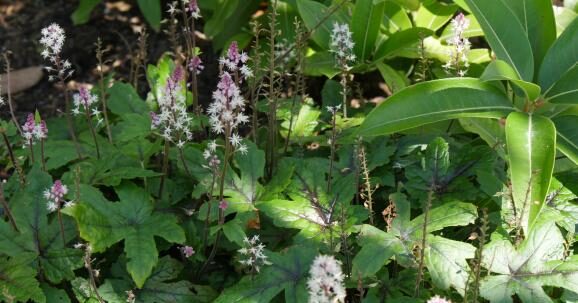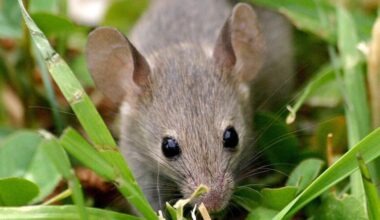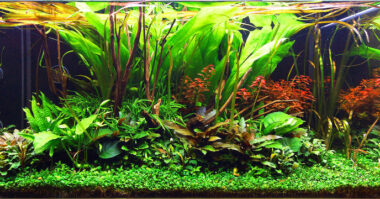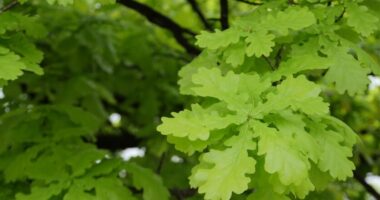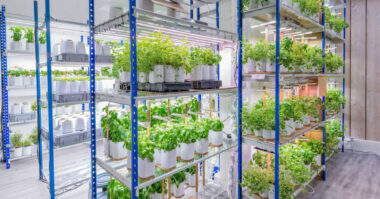Most indoor plants need sunshine and brightness to flourish. But what happens when you leave a plant in the shade? What happens to it? How do you know if a plant needs or has too much light? We will answer all these questions.
Contents
Can indoor plants be left in the shade?
As a general rule, no, because many houseplants need light to survive. On the other hand, some interiors are rather badly exposed and do not offer much light to a living room or dining room for example. For the darkest rooms, there are plants that require less light! The lack of light does not harm their growth or their need!
What happens to a plant in the shade?
Plants use light as their only source of energy through photosynthesis. During the day, plants store energy in the form of starch, which allows them to live without light during the following night, consuming their starch reserve. However, if they stay in the dark longer, they will run out of energy and eventually wither away.
Plants also need light to synthesize chlorophyll, the green pigment they use to capture light for photosynthesis. A plant that remains in the dark will therefore be very pale, often a little yellow because of other pigments that remain present (carotenoids).
Plants have photoreceptors that allow them to perceive light. If this one is missing, the plants react by lying down to try to find some.
Indeed in nature if a plant lacks light, it is often because it is buried in the ground or in the shade of other plants. By lying down, the plant tries to emerge from the ground, or to overtake its neighbors, to find the light which is vital for it.
How do you know if your houseplants lack light or not?
Most plants need a minimum of light in order to carry out the process of photosynthesis that allows them to live and develop, and thanks to which also the foliage shows its color.
Not enough light
However, indoor plants often lack this essential element, because the light intensity is very low, although our eyes do not realize it. By comparison, a very bright interior offers about 500 lux, while on a cloudy day we measure 15,000 lux outside.
An indoor plant that does not have enough light will wither, i.e. its stems will stretch more than normal in search of this light, thus displaying an “abnormal” length, directed more or less frankly towards the light source of the room.
It will show a big lack of vigor and a slowing down, or even a halt of development, flowering plants do not flower anymore or only a little, new leaves are smaller and smaller, they are yellow or pale, fall prematurely.
The risks of root rot are important if the watering does not correspond to its needs which are lower in these conditions (it is under the action of light that the plant will absorb water). The parasites are often more numerous because the plant is weakened.
Plants with variegated or purple foliage lose their color little by little.
What to do?
- Move the plant to install it near a light source.
- Turning it regularly allows all sides to benefit from the same amount of light. Have it do ¼ one turn per week.
- Do not leave the curtains closed during the day, especially in winter where light is particularly lacking.
- The dust that gradually settles on the leaves is a screen, clean the foliage as soon as necessary.
- The light walls and of course the mirrors reflect the light, so they are a good place to install an indoor plant.
- Install artificial light.
Too much light
Conversely, some houseplants are overexposed to light, which is not beneficial for them either. The signs that should alert you are the following: the leaves become deformed, crisp or wavy, they become pale, with dry, brown spots.
What to do?
- Of course after having moved the plant away from the window,
- remove all the brown parts of the plant.
- You can also filter the light with a relatively thick curtain or install blinds.
- Moisturize the plant well, without drowning it.
The sun and plants
If plants appreciate sunlight, they still need to be protected from its powerful rays. Indeed, an excess of sunlight can burn plants! Some are more sensitive than others, it will be necessary to avoid placing them in full sun. On average, 6 hours of direct exposure per day is enough!
What type of light to use for plants?
Natural light
It is generally recommended to install houseplants near a window. They do not appreciate being in full sun, especially behind a glass, its rays could burn the leaves.
For a good lighting for your indoor plants, you will keep a filter (blind, curtain…) on your windows on sunny days or you will move the plants a little bit away (8 to 12 inches) if it is oriented south or west.
Namely: to know the intensity of light at a particular place in a room, simply calculate the square of the distance. For example, at 3 m from a window, a plant receives 9 times less light than behind the same window.
But this location may not be enough to give them the right number of hours of light per day, or the quality of that light will be poor. In this case, it makes sense to install artificial lighting for your indoor plants.
Artificial light
It can be used in complement of the natural light, according to the number of hours of sun missing with the plants, or in only luminous contribution. All the artificial lights are not however valid for the plants. These have 3 types of photoreceptors (photon receptors, elementary particles of light):
- Those that are sensitive to red light (phytochromes) are the most versatile: they are used for germination, for the formation of chlorophyll, for flowering, among others.
- Those sensitive to blue light (phototropins) adapt the “shape” of the plant to allow it to capture as much light as possible.
- Those which are sensitive to the blue and ultraviolet light (the cryptochromes) have an action on the growth of the stems and the leaves, on the bloom…
Summary
The need for light is essential for the majority of plants. The leaves of plants capture and store light as energy. This is the process of photosynthesis.
Plants produce the organic matter they need to grow by absorbing light, water, carbon dioxide and certain minerals found in the earth. They feed themselves in this way to develop.
